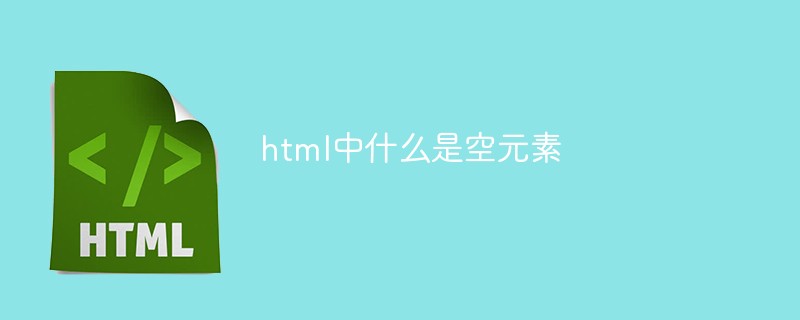Home >Web Front-end >Front-end Q&A >What is an empty element in html
In HTML, empty elements refer to HTML elements without content. There are no child nodes and content under empty elements; empty elements are closed in the start tag, which means that the empty elements are not closed. Labeled.

The operating environment of this tutorial: Windows 7 system, HTML5 version, Dell G3 computer.
Among the computer languages used to describe web pages, there is a hypertext markup language called html (Hyper Text Markup Language). The markup language that makes up HTML content is composed of a set of markup tags. This set of markup tags is often called HTML tags.
HTML tags are keywords surrounded by angle brackets, such as , and usually appear in pairs, such as and . These HTML tags appear in pairs, the first tag is the opening tag, and the second tag is the closing tag. Most HTML tags have content between the opening and closing tags, while some tags have no content.
In HTML, all codes from the start tag (start tag) to the end tag (end tag) are called HTML elements.
Because the content of the HTML element is the content between the start tag and the end tag. And some HTML elements have empty content. (empty content), those HTML elements containing empty content are empty elements.
What is an empty element?
An HTML element with no content is called an empty element. There are no child nodes and content under an empty element.
The empty element is closed in the opening tag, which means that the empty element does not have a closing tag.
What are the hollow elements in HTML/css?
Common empty elements:
,
,, , ,
Little known are:
,
, , ,< ;command>,
Related recommendations: "html Video tutorial》
The above is the detailed content of What is an empty element in html. For more information, please follow other related articles on the PHP Chinese website!